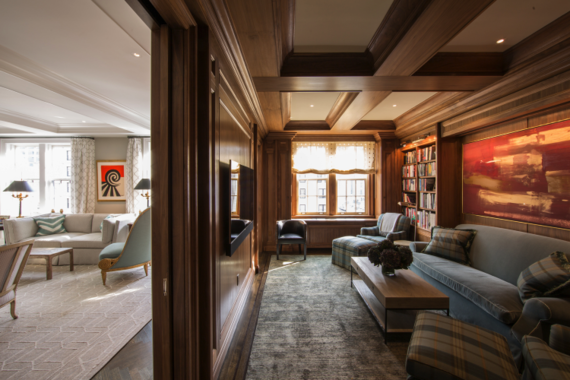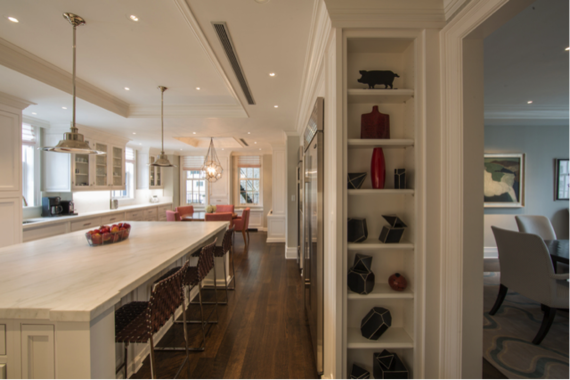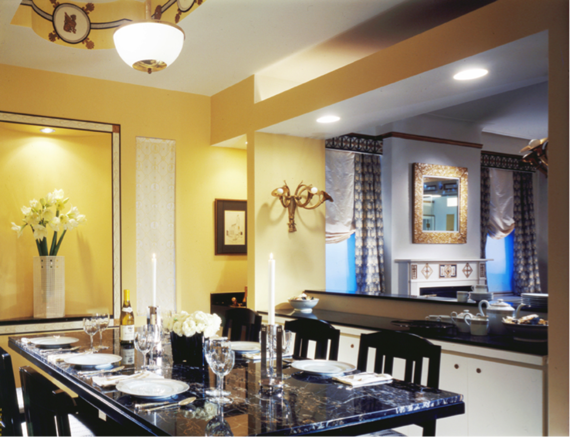Shuffling and updating your décor with the season's trends is fun, and breathing new life into a space with different wall colors or window treatments, while making things a little more complicated for you, can still be a positive experience. Why? Because these are small projects, projects that don't require a full-scale renovation. Just hear the word renovation, and you're stressed thinking about tearing down walls, dust everywhere, plumbing issues, living in a hotel, facing the typical unpredictable timeline, and an escalating budget. It's enough to make you stop at the window treatments.
Sometimes renovations are essential to create a living space you truly desire, BUT they don't have to be a migraine-inducing experience! As we move further into the dog days of summer, many people are knee-deep in home renovations. While contractors are taking advantage of the warm weather and luxury Manhattan co-op building's "summer only" renovation rules, designers are busy collaborating and communicating with renovators to help enhance these spaces and homes.
But what exactly is the difference between a DESIGNER and a RENOVATOR?
INTERIOR DESIGNERS generally specialize in form, function, space and aesthetics. Although interior designers may decorate, they are professionally trained to create pleasing environments through interior space manipulation and planning. Qualified through education and experience, interior designers identify, research, and resolve design issues. They reconfigure interior spaces to make them workable, meeting the specific needs and preferences of the client.
RENOVATORS, also commonly referred to as design/build shops, look at design problems on paper and solve them while physically executing the design in the living space. In effect, they combine the job of the designer and contractor by posing the design issues and then building them. Except for decorating them, they provide a one-stop shop for the client.
To further clarify these differences and why they are important for the client to understand, I joined forces with Lee Stahl, founder of one of Manhattan's top design/build firms, The Renovated Home. Together, we came up with a list of the top five ways your designer and renovator work together to make the renovation process easier on your budget, time, and the wrinkle lines.
1. Like Designers, Renovators are experts in maximizing a home's structural bones.
To make the renovation process seamless, interior designers listen to their clients' visions and needs and then pick out everything for them, from wall color and fabrics to lighting accessories. There are various design problems that we solve, but renovators solve problems for clients, too. They do this by performing much of the physical work, such as knocking down walls to open up spaces or building walls to create more defined rooms. Lee Stahl and his team, for example, do valuable work to open up ceilings in many Manhattan pre-wars. They are the ones who prod ceilings to see if they can increase the height by up to two feet. This is not work a designer can physically do, although a designer and a renovator can combine creative skills to create a completely transformative and unique design concept. Once they agree on the design, the designer then goes on to select paint colors or ceiling finishes or ornamentation. The renovator then proceeds to reconstruct the ceiling or create an accent wall, creating the collaborative visions of both their team and that of the designer. The final product perfectly intersects idea and reality.
2. Renovators, like Designers, can design custom design solutions to help you "declutter."
While designers will focus on form and how, for instance, the cabinetry will aesthetically fit into the room's perspective, the renovator will build it and modify it based on the design's parameters. Design/build firms that specialize in unique millwork solutions--custom pantries, closets, or even window seats that serve as storage--can be a designer's best friend when it comes to helping you get more organized. For example, both trades will come up with the perfect master walk-in closet or dining room buffet, with the renovator constructing it and the designer specifying its finishes, detailing, and color.
3. Both Designers and Renovators can create and reorganize space by using walls to define different spaces.
Based on a client's desires, designers and renovators work together to create distinct spaces by either changing the location or shortening/increasing the height of walls. While the renovator builds the wall, the designer will work with the client to select a color, decorative finish, or specify its treatment, whether it is paint, glass, metal, stone, or another material.
4. Renovators and Designers work together to develop lighting schemes that reinforce the overall design.
Lighting is an essential element to the success of a room or home, and it's necessary to have an overall scheme for both the architectural and decorative light plans. A designer will work with the renovator to create a lighting plan that provides sufficient light while simultaneously fitting within its architectural context. As the designer specifies the type of lighting and the desired effect, the renovator ensures its practical placement and its capabilities within that space before going on to build it. For instance, when a designer specifies a series of down lights within a soffit over a kitchen counter, the renovator will verify the correct light and location before installing them.
5. Together, Designers and Design/Build Renovators can keep the budget and timeline on track.
A designer will help you identify what to look for when selecting the best possible renovator for building your space, and coordinate all the trades at the top of the design pyramid. With a design/builder such as Lee's firm, most of the trades will be incorporated within that umbrella, thus oftentimes shortening the bidding process and easing the transition from permits to design to building, and making it easier to control costs. Lee encourages clients to pick "collaborative" designers who understand the renovation process and collaborate well with renovators.




